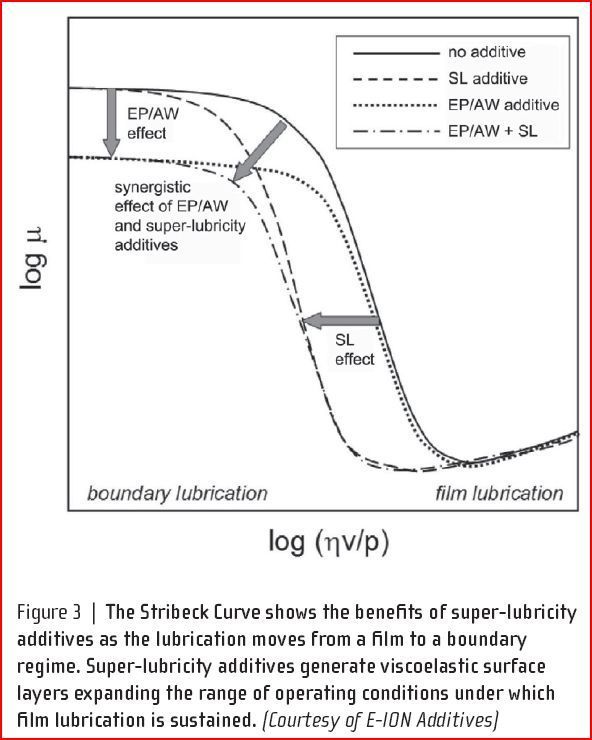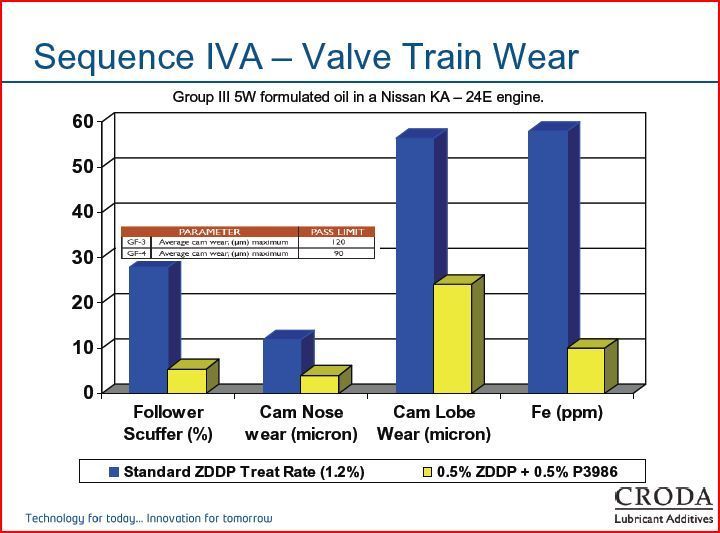Originally Posted By: Shannow
Originally Posted By: CrawfishTails
For example, if we put plain basestock oil alone into our sumps and run, there is a Stribeck curve the cams, rings, bearings experience. Then, if we add in the anti-wear and SL superlubricity additives, the Stribeck curve is shifted. That kind of effect.
The bottom line of the Stribeck curve (the X axis) is the dimensionless viscosityXspeed/load...the sloped area to the right is hydrodynamic, and represents both higher MOFT, and higher drag.
To shift more to the right, more MOFT, you increase viscosity, increase surface speed, or reduce load...pretty simple.
The area at the lowest point is where mixed lubrication is occuring, where the oil drag is low, and actual asperity contact is just happening...the rapid rise to the left is because there's more and more.
Viscosity moves you along the X axis, not additives.
Additives determine how high and sharp the increase to the left is, once the hydrodynamic "wedge" is no longer there...friction modifiers flatten it out, and can drop friction slightly lower than the low point on a traditional stribeck curve.
It's why manufacturers are these days allowing more boundary/mixed lubrication...it saves fuel...it doesn't make engines last longer, less friction is not necessarily less wear.
That's pretty interesting. Less friction doesn't always equate to less wear. I always thought that if friction was reduced then wear would be too however I've since learned that it's not always the case and it's possible for wear to increase with no changes in the co-efficient of friction.
That in itself is kind of mind blowing because common sense tells me they are connected when in reality one doesn't always affect the other.






